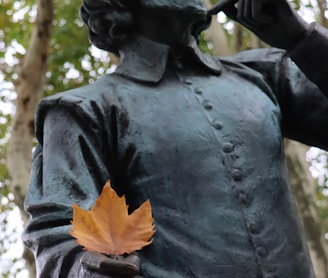The Mystery of Shakespeare's Authorship
Delve into the controversy surrounding the true authorship of Shakespeare's works and explore the evidence that suggests he may not have been the one who wrote them.
For centuries, scholars and researchers have debated the question of whether William Shakespeare of Stratford upon Avon was the true author of the 154 sonnets, 4 long poems, and 37 plays attributed to him. In this blog post, we will question why many people challenge the traditional belief in Shakespeare's authorship.
First, do not most writers write about what they know? For example, if a teacher tells you to write about your summer vacation, do you write about going to Mars? No, you write about having a fun adventure in a place you actually visited. Right?
Yet this is what experts want us to believe. They will tell you that William Shakespeare, a commoner -- not an aristocrat, had a great imagination, so he never wrote about the people around him. His plays only involved kings, queens, dukes, and lords. These folks did aristocratic things like jousting, sword fighting, dancing at fancy balls and playing tennis.
They lived in faraway places too like Italy and France. So what is the problem? In the play Romeo & Juliet, Shakespeare described a grove of sycamore trees growing on the north side of Verona. Not long ago, a man went to Italy and discovered that there really were Sycamore trees on the north side. They are still there today! Just a coincidence? Back in the Elizabethan era, it was treasonous to leave England without the Queen's permission. There is no record that William Shakespeare ever left England. How did he do it? How could William accurately describe where a grove of trees was growing if he had never been to Italy?
On the other hand, Edward de Vere grew up in a close orbit of the queen of England. After his father died, "Oxford" became a "royal ward". The best tutors money could buy taught him Greek, Latin, Italian, French, and Spanish. At 25, he visited France and lived in Italy for a year and a half. If you were to take a map of Italy and put colored push pins on the places Oxford stayed, they would match the exact locations of the Shakespeare plays.
Plus, rumors were flying that he, the seventeenth earl of Oxford, and the Queen had enjoyed a romantic evening or two. Since she was known as "the virgin" Queen, their dalliance could never be made public. Perhaps he made a vow to her that her secret would never be found out.
So, this has nothing to do with “snobbishness” or believing in conspiracy theories. It's a matter of trying to honestly answer the question of authorship. But don’t take my word for it. Start your investigation. For example, do a Google search for “two conveyances of property in Warwickshire by William Clopton” so you can see for yourself. A deed dated December 1570 states that John Shakespeare was a tenant of a 14-acre farm located four miles north of Stratford upon Avon.
This makes sense because John and his wife had five children. The lot they owned on Henley Street in town was 30 ft. by 85 feet or 2,550 sq. ft.
Many people live in condominiums here in Los Angeles and are happy living in a space that is 2,550 sq. ft. but they also can order food to be delivered and do not have to grow their own vegetables, milk, and eggs.
Not a lot of room for a cow. Or chickens. But on a 14-acre farm, there would be plenty of space! Plus, John Shakespeare was an unlicensed "wool brogger" and it was illegal to sell wool without a license. In the early 1570s, John Shakespeare had sold 5,600 lbs of wool, so where would he keep it?
Living with a wife and 5 kids, in the city, on a 30 x 85 ft lot, where would John have stored all that wool? Also, William grew up in a small town and in small towns, people love to talk. Everyone knows everyone else’s business. Perhaps the main reason there is no record of William attending any school is because he never went to school. Period. If he did, in a small town, someone would have said something. Told someone. Kept something. Nobody did.
The simple answer is that things do not add up, so people question his authorship.




